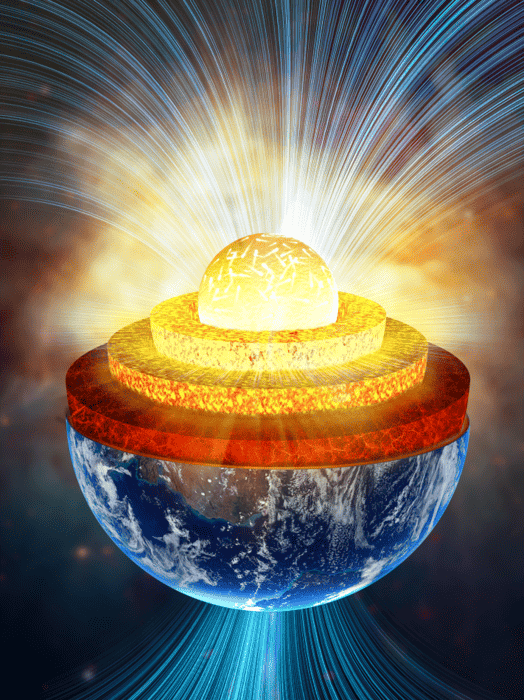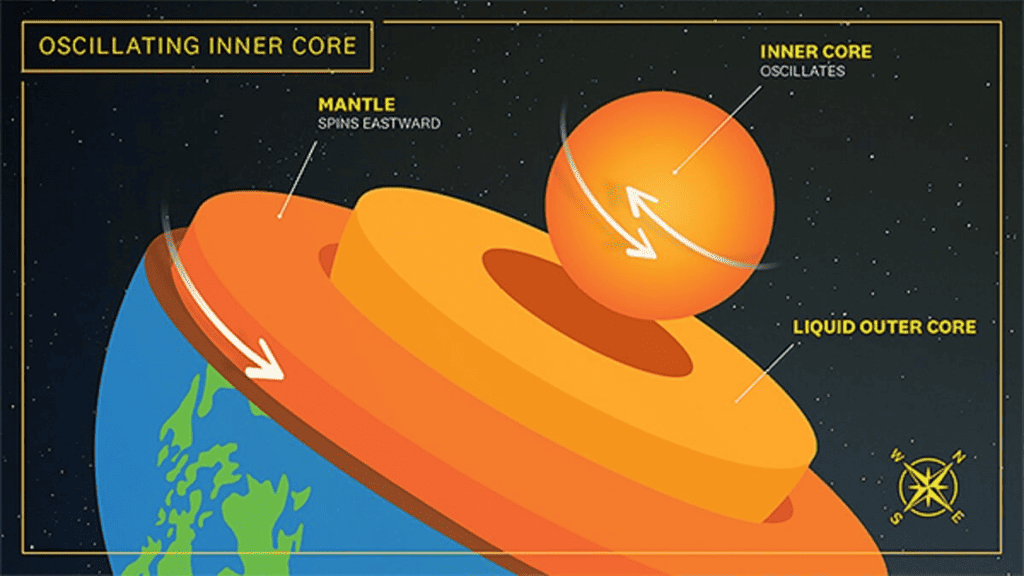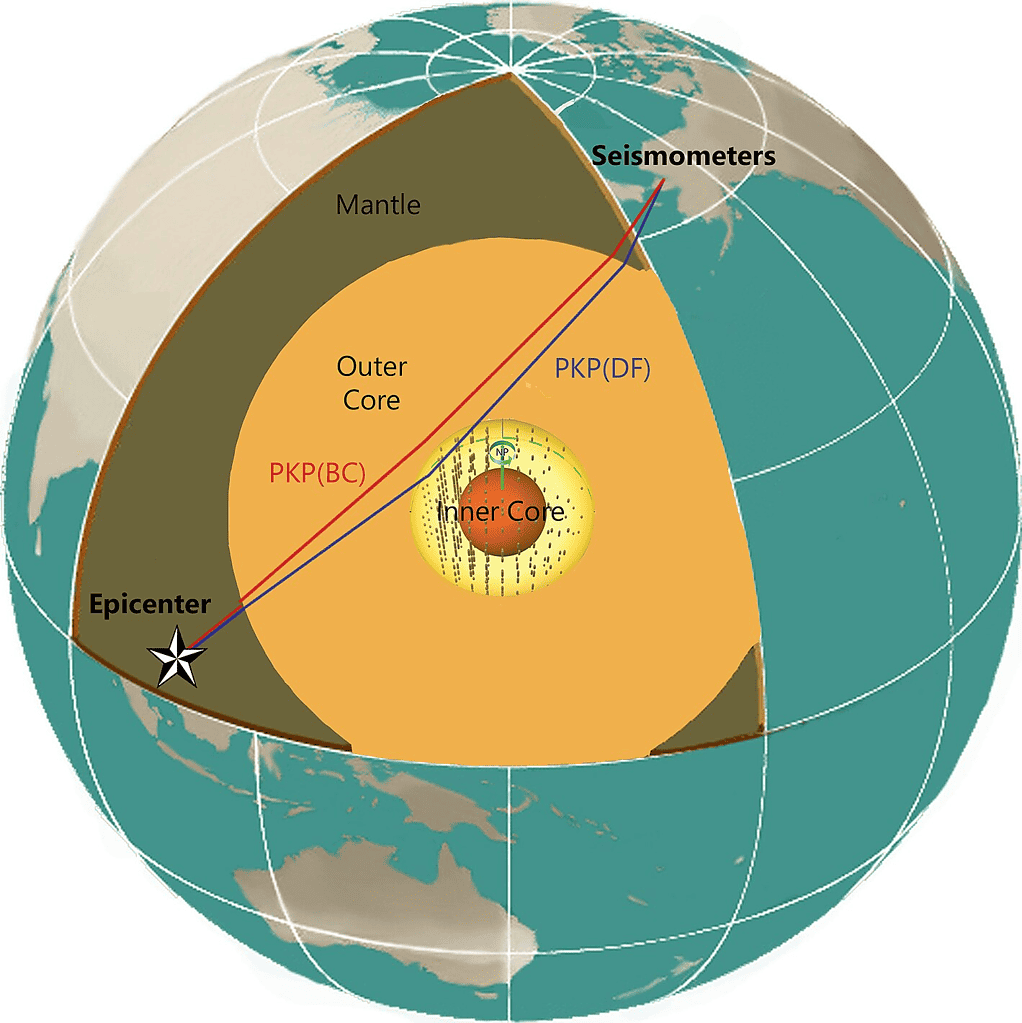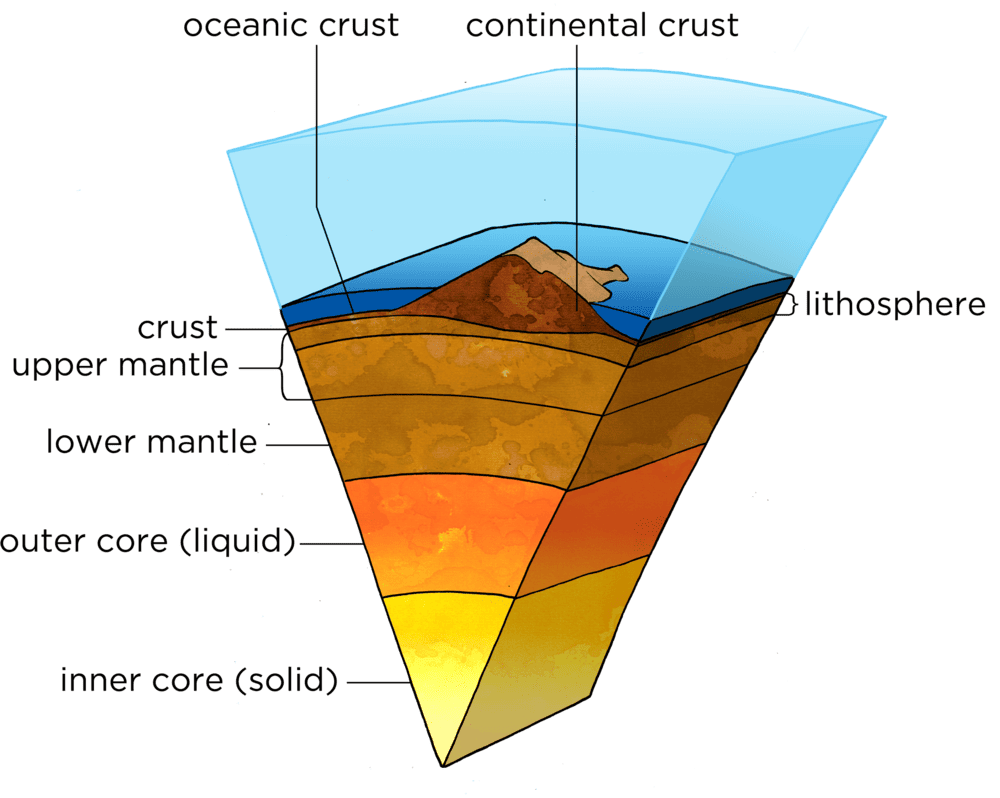The phenomenon of inner core rotation is fascinating. This part of the Earth is so extreme that its temperatures are almost as hot as the sun, and it’s subjected to pressures over 3 million times that of the atmosphere. Despite these intense conditions, the inner core appears to be rotating — furthermore, it appears to be changing its rotation direction.
Essentially, the inner core is spinning faster than the mantle and even faster than the Earth as a whole. So why is that happening?
What the Earth’s Core is Like

Dive with me for a moment into the molten layers of the Earth. Deeper than the crust and the mantle, you’d find yourself surrounded by the outer core, a swirling mass of liquid iron and nickel. It’s incredibly hot, with temperatures reaching up to 5,000 degrees Celsius (9,032 degrees Fahrenheit).
Now, imagine going even further to the very center. That’s where the inner core resides. It’s even hotter than some parts of the Sun and yet, the immense pressures at this depth keep the inner core solid. In fact, this is the main difference between the outer core and inner core: they’re comparable chemically, but the pressure of the inner core keeps it solid (while the outer core is molten).
The inner core is roughly the size of the Moon. But here’s the captivating part: studies suggest that this inner core rotates. Yes, within the spinning Earth itself, the inner core has its own independent twist, like a gyroscope within a toy top.
But why, and how? That remains one of Earth’s best-kept secrets — but researchers are starting to find some evidence.
What We Know About Earth’s Core Rotation

The outer core and the inner core are responsible for producing the Earth’s magnetosphere — the magnetic layer that protects us from harmful solar radiation. Knowing that the inner core rotates (and how it rotates) could illuminate how these layers interact, which in turn, could help us better understand our planet’s crucial magnetic field.
Researchers first proposed that the outer core is rotating at a different speed in 1975. This was meant to explain a phenomenon of Earth’s magnetic field called westward drift: some parts of the field rotate about 0.2 degrees per year westward relative to Earth’s surface. Then, in the 1980s, researchers started considering that the inner core could also be rotating at a different speed, perhaps even in opposition to the Earth’s rotation.
The first robust estimation came in 1995. Gary Glatzmeier at Los Alamos and Paul Roberts at UCLA published the first “self-consistent” three-dimensional model of the core that accounted for this rotation. Several other models were proposed in the following years but remarkably, a series of 2023 studies brought shed new light on how the inner core is spinning.
Inner core rotation reversal
For instance, a team of researchers from the University of Beijing suggested that the inner core may be doing a U-turn — spinning in one direction, then slowing down, and then reversing its rotation direction.

“Here, we show surprising observations that indicate the inner core has nearly ceased its rotation in the recent decade and may be experiencing a turning-back in a multidecadal oscillation, with another turning point in the early 1970s,” the team write in their new paper.
As crazy as this sounds, it fits some of the magnetic and seismic observations made by researchers during the decades (which we’ll get to in a moment).
“These observations provide evidence for dynamic interactions between the Earth’s layers, from the deepest interior to the surface, potentially due to gravitational coupling and the exchange of angular momentum from the core and mantle to the surface,” the researchers write in their paper.
Another study by researchers at Peking University in China offered even more detail and proposed that the super-rotation of the inner core (the rotation that’s faster than the mantle) stopped around 2009, and now, the inner core is spinning in the opposite direction.
“We think that the core is, relative to the surface of the Earth, rotating in one direction and then the other, like a swing,” Xiaodong Song and Yi Yang, the study authors, told AFP.
Researchers not involved in the study praised the results.
“This is a very cautious study carried out by excellent scientists who used a lot of data,” said John Vidale, a seismologist at the University of Southern California who was not involved in the research.
However, none of the existing models really explains all the observations perfectly.
That is because the inner core is so difficult to study.
Why It’s So Difficult to Study the Core

You might wonder, “If we’ve made it to the Moon, why can’t we just dig down and study the core directly?” Great question! The truth is, it’s not as simple as grabbing a shovel.
First off, we’re talking about diving nearly 4,000 miles (6,400 km) deep. Even the deepest holes we’ve ever dug, like the Kola Superdeep Borehole in Russia, barely scratch the surface, reaching a mere 7.5 miles (12 km) down.
Moreover, as we delve deeper, temperatures and pressures rise dramatically. Our most advanced equipment would simply melt or be crushed long before reaching the core.
So, how do scientists uncover the core’s secrets? They rely on seismic waves. When earthquakes occur, they send shockwaves throughout the planet. By measuring these waves, scientists can make educated guesses about the Earth’s interior structure and its movements. Think of it as Earth’s version of an ultrasound, giving us glimpses into its hidden depths.
In particular, researchers looked at the difference in the waveform and travel time of seismic waves from near-identical earthquakes that pass through the Earth’s inner core along similar paths. They found a lot of temporal variation in past decades but almost no variation from 2009 — suggesting that that’s when the inner core paused its rotation.
This is then correlated with changes in how the magnetic field varies over time and variations to the length of the Earth day — both of which are partially influenced by the inner core rotation.
How This Affects You and Me
All right, let’s bring it back to the surface. Why should you care about the inner core’s dance?
It’s simple. This rotation plays a crucial role in the generation of Earth’s magnetic field. If you’ve ever used a compass, thanked your lucky stars for the aurora borealis (Northern Lights), or even just appreciated the fact that our atmosphere isn’t stripped away by solar winds, you have the core’s dynamics to thank.
The Sun constantly emits a stream of charged particles known as solar wind. The magnetosphere acts as a shield, deflecting these charged particles away from the Earth. Without the magnetosphere, this solar wind could directly hit our planet, potentially stripping away the atmosphere. Apart from solar radiation, the Earth is also bombarded by cosmic rays, which are high-energy particles from deep space. The magnetosphere helps in deflecting many of these particles, protecting life on Earth from their harmful effects.
So yeah, without the outer and inner core, it would be much more difficult for life on Earth to survive.
The core of it all

There you have it. Beneath your feet, in the fiery depths of our world, lies a titanic iron heart. It beats, it rotates, and it keeps the rhythm of our world in check. The Earth’s inner core rotation is a captivating mystery of nature, reminding us that there’s always more to discover, always more secrets waiting just below the surface.
Deep down, in the core of our planet, a lot is going on — and we don’t even know half of it. But researchers are working on it and every year, our understanding of the planet’s core improves — and with it, the understanding of how our planet evolves.






